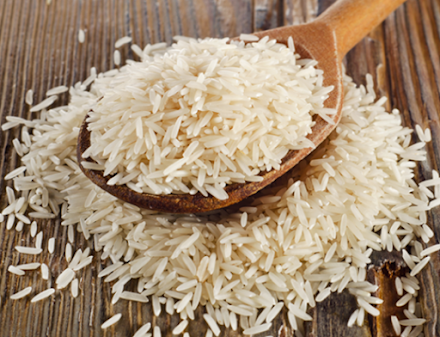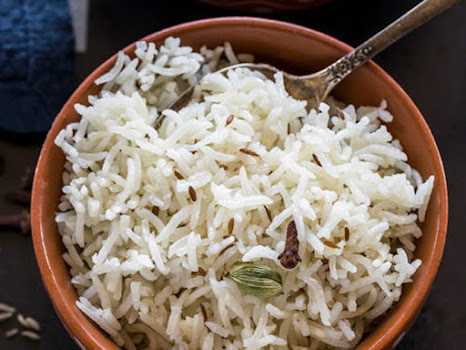Will rice be useful for your wellbeing?
Rice has been found in archeological unearthings dating from 8000-5000 BC, and it is taming most likely occurred around then in eastern China. Various areas and societies lean toward various kinds of rice, and it remains staple nourishment for a huge piece of the total populace.
Nonetheless, with the coming of trendy weight control plans, for example, low-sugar eats less, rice has gotten an awful standing, similarly as bread is regularly unreasonably denounced. We realize that starches are a fundamental supplement and the body's favored wellspring of energy. That is the reason for staying away from a whole nutritional category can blowback, prompting uncontrolled eating and an interminable yo-yo cycle.
Here's some data on the medical advantages and reasons why various kinds of rice can be solid in your eating regimen, contingent upon how you use them :
Medical advantages:
Rice has been around for millennia since it is a wellspring of supplements. Entire grain rice - any type of rice that contains the germ, wheat, and endosperm - isn't just a decent wellspring of filling fiber, yet besides contains an assortment of nutrients and minerals. For instance, it is wealthy in magnesium (significant for bone wellbeing, muscle compression, and circulatory strain guideline) and manganese (significant for cerebrum and sensory system wellbeing). It is likewise a decent wellspring of thiamin, nutrient B6, phosphorus, and selenium.
In contrast to bread, whose nourishment mark can help settle on nutritious and fulfilling decisions, it isn't as essential for rice. Most assortments, except for white rice, contain 2 to 4 grams of fiber and 2 to 5 grams of protein for each 1/2 cup (cooked) and have a comparable nutrient substance.
THE DEBATE BETWEEN WHITE AND BROWN RICE.
Albeit white rice contains fewer supplements, fiber, and protein than earthy colored rice (because of handling), it very well may be viewed as sound dependent on what you eat. By consolidating white rice with vegetables, beans, or lean protein, you can change it up of nutrients, minerals, fiber, and protein to any supper.
Rather than stressing over food names, while picking a kind of rice, consider what you need to cook with. You most likely won't eat plain rice, and there are various textures, flavors, and surfaces to consider for every assortment.
Assortments OF RICE AND THEIR USES:
Earthy colored rice is perhaps the most well-known and flexible kinds of rice. It is delicate and has a nutty flavor. It comes in long, medium, or short grain structures. More limited grains separate better when cooked, making them ideal for sushi or risotto. Longer grains are somewhat stickier or more splendid, ideal for rice bowls that contain lean protein and vegetables.
White rice is additionally a similar size as above, however is milder and more fragile because the endosperm, grain, and germ are eliminated during handling. Therefore, it additionally has a lower fiber content (since it's anything but an entire grain). Diminishing fiber can be advantageous for certain individuals, for example, competitors who need quick processing sugars before an extraordinary exercise, or individuals with stomach related issues. There are additional kinds of fiber improved with supplements, for example, iron, thiamine, and folic corrosive.
This long-grain rice, local to Pakistan, is fragrant with nutty and flower flavors. Basmati Rice Nutrition is regularly utilized in curries since it is impervious to heavier sauces.
It is some of the time alluded to as "prohibited" rice. It begins in Asia and has a profound purple or dark tone from its anthocyanin content (a similar cell reinforcement found in blueberries and beets). Dark rice has a sweet nutty flavor and can be utilized in appetizing dishes like this rainbow serving of mixed greens or in sweet dishes like dark rice and coconut pudding. Dark rice additionally contains a smidgen more fiber and protein.
Like dark rice, red rice gets its tone from anthocyanins. The Camargue locale of France creates somewhat tacky short-grain red rice, while Thai red rice or "freight" rice is like jasmine rice. Wealthy in magnesium and iron, red rice has a hearty, nutty flavor and can be utilized like earthy colored rice.
This sweet-smelling long-grain rice is light and sweet and combines well with fish and fixings, for example, coconut, ginger, garlic, and cilantro.
This short-grain rice is regularly utilized for risotto, as it has a higher starch content and can add to the rich surface of the dish.
Wild rice is a grass that fills in water and is local to North America. It tastes extraordinary all alone and can be an incredible side dish to any feast when joined with an assortment of vegetables, vegetables, or other protein sources. Wild rice likewise has a somewhat higher protein and fiber content than different sorts of rice (counting dark rice).




Comments
Post a Comment